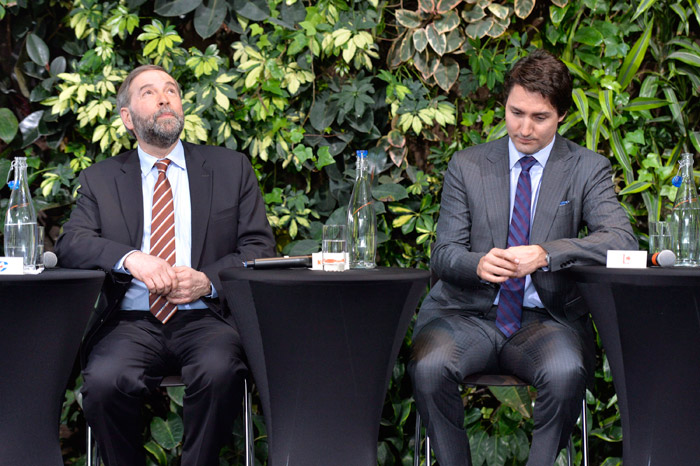Across North America, left-wing politicians are proposing a raft of new spending programs. In Canada, both Justin Trudeau and Thomas Mulcair have plans for universal, government-funded childcare, and in the United States, President Obama wants to introduce tuition-free community college. There are good arguments both for and against these programs, but they come with indisputably high costs.
To finance his community college initiative, Obama planned to tax college savings accounts. These tax-exempt savings vehicles are popular among upper-middle class Americans as a means of paying for higher education. Upon announcing the proposal, there was an immediate backlash, even among members of the president’s own party. As such, the proposal was quickly tabled.
This episode reveals the inherent contradiction at the heart of North American centre-left politics today. Politicians realize that the appetite for new social entitlements is large, yet they seem unwilling to ask the primary beneficiaries of many of these programs—the middle class—to pick up a reasonable share of the tab. Instead they target narrow groups in society. For example, Obama and Mulcair both wish to target corporations, the financial services industry, and high income earners, while Trudeau claims he will not raise taxes at all.
Much of this paradox can probably be traced to the large-scale tax cuts that have been enacted over the past decades. Though this trend was far more prevalent in the United States, the extent of similar political developments in Canada should not be trivialized. As politicians cut taxes, they also seemed more than happy to go on both enhancing the generosity of existing programs and implementing new ones. The tax-cutting wave gave the broad public the financial benefits of lower taxes, but did not reduce services.
While these actions may have seemed sustainable in the boom years prior to 2008, the financial crisis and tepid recovery since have laid bare the stark reality of persistent structural deficits.
The present fiscal conditions of many governments have left them with few means of paying for their desired spending initiatives. In Ontario, for example, Premier Kathleen Wynne suggested a modest increase in the provincial gasoline tax to pay for infrastructure improvements. The hostility from the public was so great that she quickly cancelled the broad-based tax increase and instead announced an increase in income taxes for high earners, which would only amount to a small fraction of the money she initially wished to spend.
The United States is also on an unsustainable budgetary trajectory, yet Obama continues to peddle the illusion that the public finances can be put on a sound footing and current levels of government services can be maintained by reversing income tax cuts only for the very wealthy. It has always been hard to raise taxes on the largest swath of constituents, but now it seems tantamount to political suicide.
If the centre-left in Canada and the United States wants this expansion of government, it will have to pay for it. Taxing the rich will only yield so much revenue and economic evidence suggests that high marginal tax rates can discourage savings, investment, and economic growth. Thus, they would be well-advised to learn from the social democratic bastions of Scandinavia. Contrary to popular belief, the Scandinavian nations such as Sweden, Denmark, Norway, and Finland do not derive most of the revenue needed to pay for the welfare state from the rich. Sweden, for example, has a less progressive tax code than the United States. Instead, these Scandinavian governments primarily raise revenue from far-reaching and somewhat regressive consumption taxes like a Goods and Services Tax. These taxes, while regressive, do less damage to the economy than alternatives like progressive income taxes or capital taxes, as they don’t penalize savings, investment, or work. They also provide a stable source of funding for the welfare state by ensuring that most of the population is involved in its financing.
Given demographic pressures that existing social benefits face, expanding the welfare state will be difficult without substantial increases in revenue from the middle class. If the centre-left desires a larger government, it should try to address the tradeoffs inherent in that goal. It will have to convince the broad taxpaying middle class to pay for the new programs they say they want to ensure that they are fiscally sustainable. To do otherwise would leave Canadians without a debate over the costs and benefits of new government programs.









